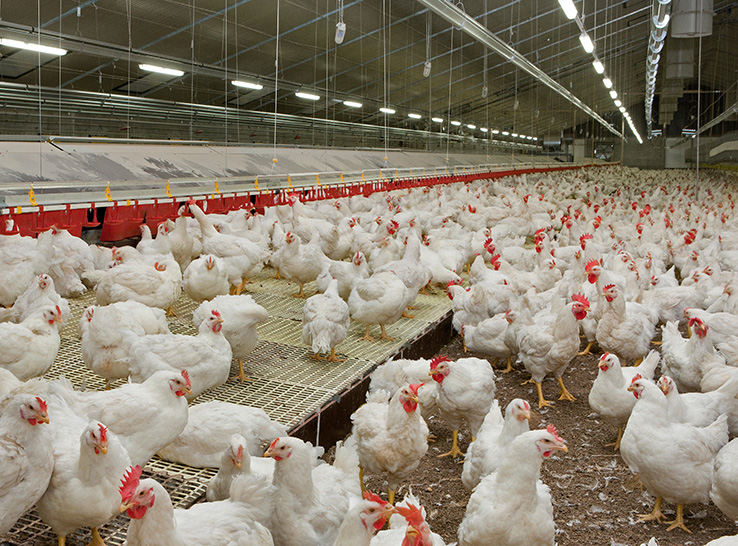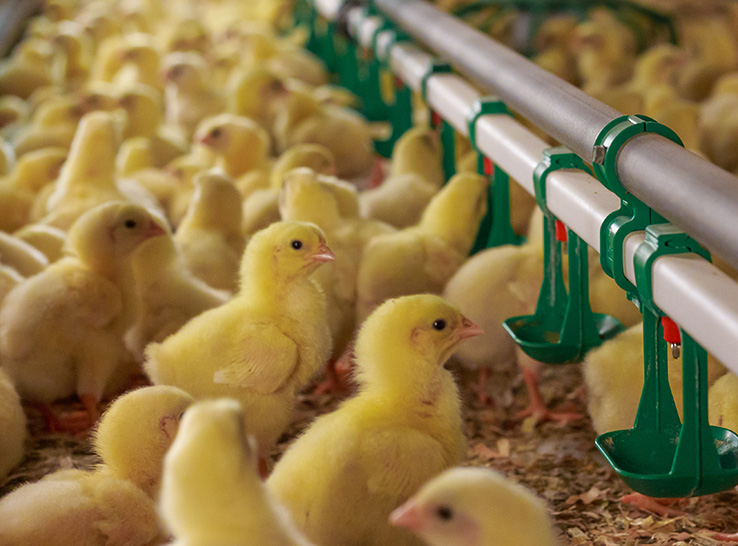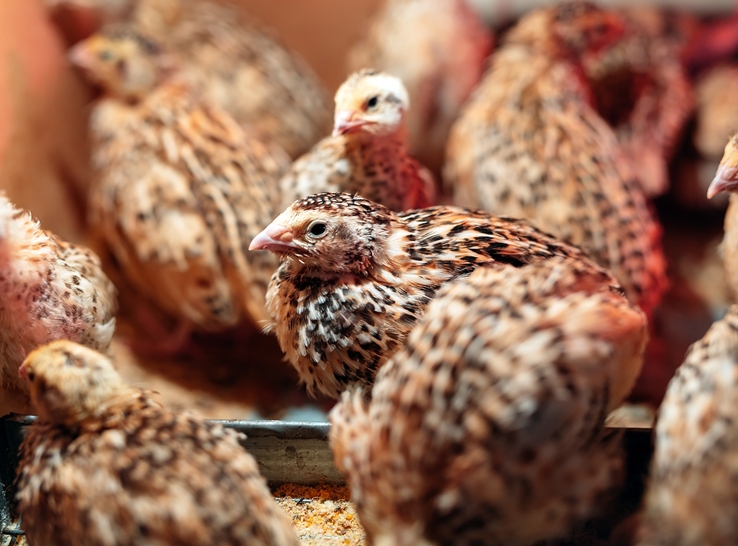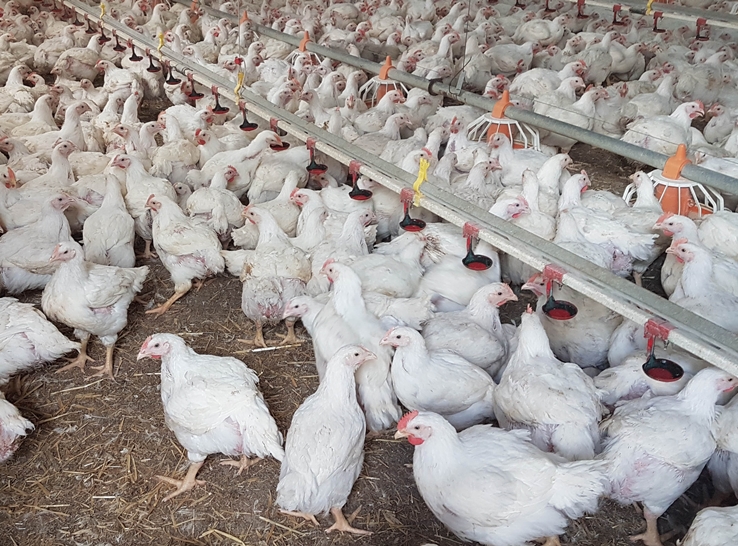By Dr. Bethany Baker-Cook, Auburn University
The first few days of life are some of the most important in chicks’ lives. During this time, chicks start developing and set themselves up for the rest of their lifetime. The husbandry decisions made at this point can impact the birds’ growth, development, health and welfare.
This newsletter will focus on three important parts of giving chicks the best start:
- Feed
- Water
- Temperature
Feed
When chicks are placed, it is important to help them find food and drink as soon as possible. The feed should be available to the chicks as soon as they arrive, and it should be easy for the chicks to find. Although chicks do have yolk sacs, they will already have used up some of their yolk sac reserves during transportation.
When chicks are raised with a mother hen, the mother hen will provide the chicks with food and teach them where to find food. However, when chicks are raised without a mother hen they will need to learn how to feed and where to find the feed by themselves. Chicks do this by exploring and pecking at different things in their surroundings to discover is something is food or not. This behavior starts within the first few hours post- hatching. You can help chicks find feed quicker by making it easier for them. Some ways of doing this are:
- Add chick paper or additional chick feeders can make it easier for chicks to find feed.
- Place the feed close to the waters will help chicks find it.
- Use light to attract the chicks to feeders and waterers.
- Make sure that all your feeders are well filled.
Research has shown that if chicks have delayed access to feed, it can negatively impact their growth, development, health and welfare. A prolonged delay to feed access can result in decreased body weight (both short and long term) and increased mortality. Chicks hatch with an immature gut, which develops in the first week of life. The intake of food stimulates a rapid development of the gut, and delayed food intake will impact the development of intestines. Delayed food intake also negatively impacts the immune system development, leading birds to be more susceptible to environmental pathogens and have a reduced immune response to infectious diseases later in life. So, it is important to ensure that your chicks can find feed as early as possible.
Water
Water, similar to feed, is essential for chicks. Water is considered the number one nutrient
for chicks and adult poultry. When chicks arrive at their new house water should immediately be available, and should be cool, fresh and clean. However, make sure that the water is not too cold as cold drinking water can lower the body temperature of chicks and be dangerous. Chicks should be drinking around 3 grams of water for every gram of food they eat, and the amount of water they consume should increase over time.
Water is important for metabolism, regulating body temperature, digesting food and eliminating waste. Research has shown that delaying access to water can reduce growth and final meat yield, increase mortality and impact the immune system.
Temperature
Chicks are ‘polikotherms’ or cold-blooded until they are 12 days of age. This means that they are unable to regulate their own body temperature and are dependent on the environmental temperature for staying warm. Because of this it is important to provide chicks with the optimal temperature. It is important to measure the temperature at chick level, so you are aware of the temperature they are experiencing. You can do this using a tool such as an infra-red temperature gun. A temperature difference of 0.5-1°F degrees can already impact chick health, behavior and growth. The ideal temperature is usually around 90-95°F (33-35°C)90°F, however this can vary with body weight and strain. Please check with your individual breeder for requirements.
Check your chicks’ feet temperature. These should be warm; cold feet indicate the chick is not warm enough.
Your chicks can also tell you about how they are experiencing the environment, by looking at their behavior and how they are spread throughout the house.
- In perfect conditions the chicks will be evenly spread throughout the house. They will usually be in clusters of 20 to 30, with chicks moving between the groups. They will also be active and performing a wide range of behaviors such as eating and drinking, play behaviors and comfort behaviors such as preening, dust bathing, and wing stretching.
- If the chicks are too cold, they will be inactive, and sitting huddled together and close to a heat source. The chicks will also be noisy and making lots of chirping noises.
- If the temperature in the barn is too high, you see chicks spread out as much as possible and trying to get to the edge of the brooding area. These chicks will likely be restless and keep changing their body position. They may also be panting, laying stretched out and have drooped wings that are spread away from the body.
- Finally, if you notice all the chicks are huddled in one particular area, this can be an indication of a draught.
When the temperature is either above or below ideal, will result in stress and the chicks will eat less. The stress and decreased feeding will lead to reduced growth, as well as negatively impact organ and bone development. Furthermore, it will impact the immune and digestive systems, making chicks more susceptible to disease and possibly increasing mortality.
Check your chicks!
You may want to check your chicks when they arrive. These are some things that you can look for:
- Are the eyes clean, open and shiny? Is the beak clean with closed nostrils?
- Are the feet warm and free from red or swollen hocks? Is the down dry and shiny?
- Does the stomach feel soft and malleable, not hard?
- Does the navel look closed and clean? An open navel is a greater risk for infection, which can lead to disease and mortality.
References
De Jong, I., J. van Riel, M. Bracke and H. van den Brand. 2017. A ‘meta-analysis’ of effects of post-hatch food and water deprivation on development, performance and welfare of chickens. Plosone. https://doi.org/10.1371/journal.pone.0189350.
Louren, S., and M. Kuijpers. 2001. Control temperature of young chicks to reduce mortality. World Poultry. 18(11):24-26. Poultry Signals. 2016. Broiler Signals: A practical guide to broiler focused management. Roodbont Publishers. Zutphen.
To view the full Poultry Extension Collaborative newsletter, Vol 41, click here.
Editor’s note: Content on Modern Poultry’s Industry Insights pages is provided and/or commissioned by our sponsors, who assume full responsibility for its accuracy and compliance.








